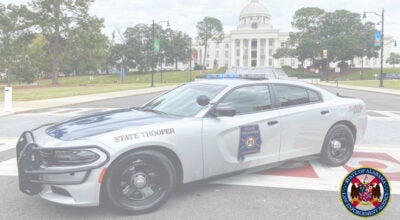Green on being green
Published 12:00 am Thursday, April 22, 2010
Florala High School ag teacher Daniel Green is tasked with bringing “green” to the school campus – green plants, green products and green technology.
For many years, the school’s aqua-science program, which produces a selection of tilapia, coy, goldfish and channel catfish, has brought the school much recognition.
Monday, the school added another stem in its bouquet of hands-on green initiatives – a wind turbine.
Green said the project was completed by the students and will generate supplemental electricity that will be used to power the school’s fishery.
Principal Donny Powell said the $10,000 project will also serve as an experiment to see how cost-effective the power generating method is for local homeowners.
“It runs right into the power box and a separate meter keeps track of how much electricity it generates,” Powell said. “Our experiment is to see how long it will take to recoup the $10,000-expense. Then, we will be able to tell the community if wind power is or isn’t something a homeowner here can use to their advantage.”
Students will use the experience to learn how to interpret graphs and other types of data, he said.
“This is just one of the many things we have here on campus that works together in a green way,” Powell said. “I thought it fit well with what we were doing here on campus.”
Also on campus are two solar powered hot water heaters, which Green said are ideal for homeowners and easy to construct.
“We have one that provides hot water for our fishery and the bathroom in our shop and another one that is portable,” he said. “We’re currently constructing a solar greenhouse that we’ll be able to capture the heat it creates and use it to heat the maintenance building.
“Anyone can create one of these,” he said. “All they need is an old hot water heater, a few simple dressings and about a day. Once it’s finished, water can reach temperatures up to 120 degrees Fahrenheit – and that’s plenty hot enough for a hot shower.”
The approximate cost is $200, “and believe me, it won’t take long for it to pay for itself,” Green said. He also volunteered to make the plans available to anyone wishing to construct one for personal use.
Another philosophy at FHS is “waste not, want not,” Green said.
“We are all about working with our environment here,” he said. “We also have raised beds, which have strawberries and tomatoes planted, that we using our fish waste as an organic fertilizer on.
“Our purpose is to do a study using the raised beds – one with traditional fertilizer and one with the organic fertilizer,” he said. “We plan to study things like plant size and yield to determine which is the best way to grow. If it’s the organic way, we hope to take that information and present it to farmers locally.”
And once the school’s “passive solar greenhouse” is completed, the hope to be able to grow bedding and gardening plants for the community.
“The thing about what we are doing here (at FHS) is that it is so hands-on,” Greene said. “It is truly green technology. From the hydroponics plants to the fishery to the wind turbine. Each one of these programs has an impact not only on the student but also on our environment.”





